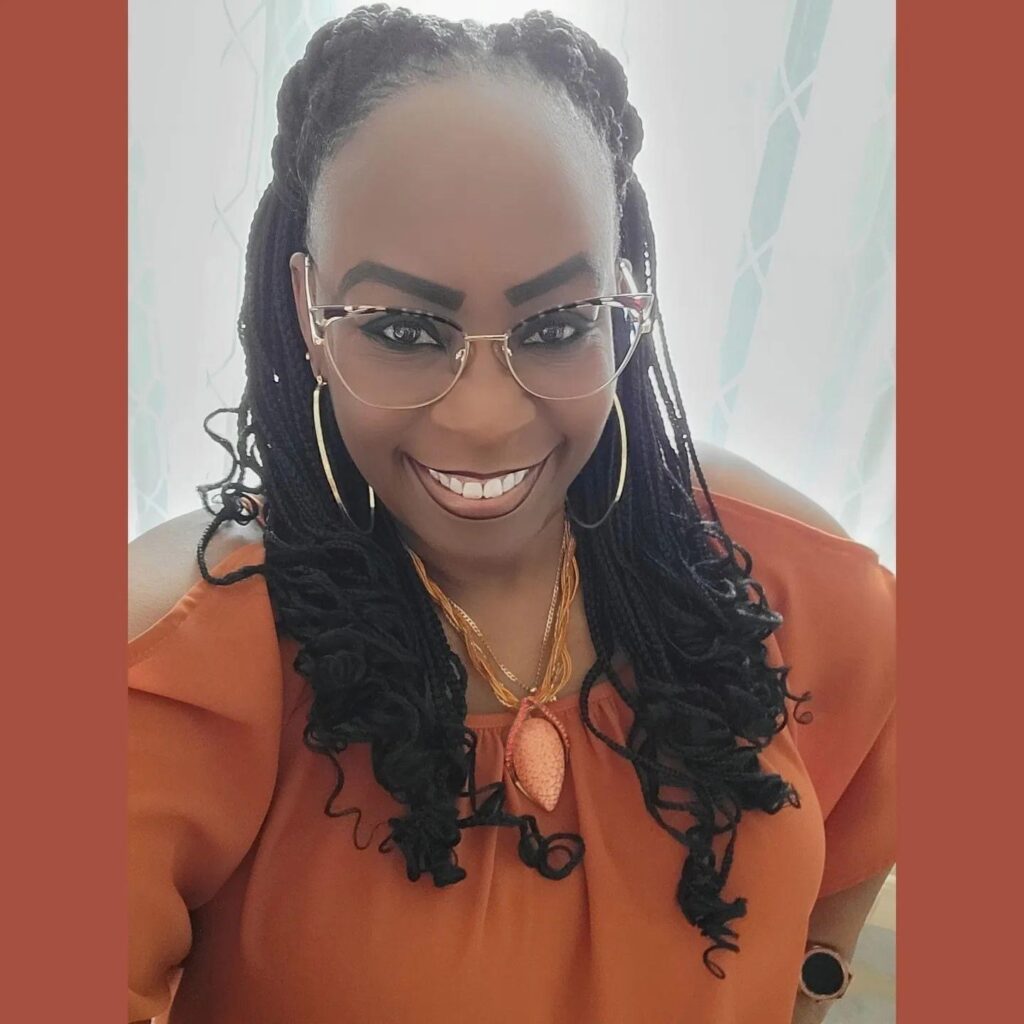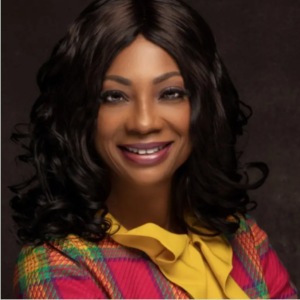IMI Signature Series: Gail Graham
The Institute for Medicaid Innovation (IMI) Signature Series profiles IMI volunteers about their work, passions, and experiences.
Interview with Gail Graham, IMI Board Member, conducted March 24, 2023.
The below has been edited for brevity and clarity.

Just to get us oriented and acquainted with yourself, can you talk a little bit about your advocacy work and the different roles you play on a day-to-day basis.
I’m the director of Mt. Lebanon Baptist Church HIV/AIDS outreach services and that’s actually where I began my advocacy work. From there, I became the global representative for Johns Hopkins AIDS global clinical trials network, where we review new treatments for HIV/AIDS and hepatitis to see if they are appropriate for our communities.
That’s how I got involved with clinical research. I started being involved in doing personal clinical research where I became a participant. I was a participant with [National Institutes for Health] NIH and with Johns Hopkins. From those experiences, I was able to go back to my community and let them know how far research has come since Henrietta Lacks and the Tuskegee experiments.
Being a Black female, especially in Baltimore, where people have a lot of mistrust from the Henrietta Lacks history and Johns Hopkins. I can go back to my community and say research has come a long way and we’ve learned a lot from it. I can say “if you’re not comfortable with it, you can always stop,” and there’s a lot of incidental findings in it where you can learn a lot about your health that you may not have otherwise found out. I’m comfortable doing that and letting them know that it’s just a lot different; it’s a lot more informative.
If it weren’t for this research, we wouldn’t know as much about something personal like headaches—we wouldn’t know how much Advil or Tylenol to take. Me personally, being HIV positive, I was taking the drug ACT and a handful of other drugs. I am how able to take two shots every month—I don’t have to take any pills. I don’t have any pills in the house for HIV at all, and that was through the studies. And one of the studies I was on was for an injectable drug. So I can go to my community and say, “I helped with this. I know the benefits of this.” That’s why I’m so proud and into advocacy for my community. From there, I joined the HIV planning council for Baltimore City, where I am able to weigh in on different policies as well.
And finally, I forgot about one of my favorite programs, the PATIENTS Program. I’m a Patient Professor with the University of Maryland PATIENTS Program. And that program I really didn’t want to be a part of to begin with because I was so tired of organizations saying they were going to do things for the community and never did. They would come into our community and take from our community and never give back. When I met the PATIENTS Program’s Dr. Daniel Mullins, he not only talked the talk, but he walked the walk. His team came in and listened to what our community was saying and they realized that our community was a food desert and they did something about that. They gave us a lifelong connection to the Maryland Food Bank to help us make a difference in our community, where we get food drops. Not only that, but they stayed with us when we had a violent incident where a lot of people didn’t want to come into this area because of the riot that was happening. They were the first group that was there. They said, “that’s not going to stop us. We want to be there. We want to help this community.” They showed up. They were there.
Dr. Mullins and his team, they encouraged me. They helped expand my horizon by helping me become a national speaker. I never thought I would do that, just never. They helped me become a writer for the British Medical Journal. When I got an from the British Medical Journal, I thought it was the Baltimore Medical Journal [laughs]. I had no clue what that was. That was really amazing to me. That helped me realize the value of my voice as a patient and the power of my voice as a patient.
Dr. Mullins helped me with connections with different organizations, and that’s how I met [Institute for Medicaid Innovation Founding Executive Director Dr.] Jennifer [Moore]. And once I met that angel, our connection was just so natural. To be invited to be a part of the IMI board was just an honor. To be on a board that is able to give advice to the Medicaid program about what the consumers are feeling, not just the health plans, makes a big difference. It’s not just a check box saying “we have someone from the community on our board.” They actually listen to what I say and don’t make me feel like my voice doesn’t matter. I can tell that my voice matters. They’ll stop and say “Gail, what do you think?” They are listening to somebody who is a patient, somebody who has used Medicaid many times. I used it when I was pregnant with my children, after I was pregnant, and my children were on it. I know Medicaid and I know the value of Medicaid. I have family members on Medicaid now and they have issues with their health plans. I can help them but then I can also share those issues in the community with the board, and say “how can we address this?”
Fantastic. Is there anything that you’re working on now or recently that you’re really excited to be working on?
Everything! [laughs]
I’m really excited about being on the governing board of IMI, that’s just major for me.
I am also a founding member of a new organization. My best friend has started a 501(c)3, Ishshah’s Place, to support individuals experiencing domestic violence. That’s near and dear to my heart because she went through a situation like that as well as myself. To be a part of the that and help our community through that is meaningful. Especially in the field of HIV, where you run into a lot of women who have experienced that and are currently going through that, so to be able to make a difference in their lives that way helps. We have a 5K walk we did in October and now my friend has a faith-based walk that she’s working on, and we are working on a conference focusing on teen dating violence. I’m grateful to be a part of that. I can give my experience and educate people about HIV and teen dating, which go together frequently, unfortunately.
My HIV ministry is also on the verge of being training to be testers. We won’t have to depend on anybody to come in and doing the testing for us. We’ll be able to test our communities or go out to different churches and test. We’ll be able to use different venues for HIV testing, counseling, and education. We’ll be doing that in April.
Incredible. I wanted to ask you about something you wrote last month about serving underrepresented communities. I’m going to read what you wrote:
“It’s been 42 years since the first case of HIV was detected. In the early days, life expectancy for people living with AIDS was reduced significantly. Since then, there have been many major medical advancements that mean HIV is no longer a death sentence. Despite these advancements, Black people, as well as other people of color, and women, are often left out of HIV research.”
Can you speak a little bit to that, what you’ve seen in your community, and anything you’re doing to combat that?
There’s a myth out there that people of color do not want to participate in research. And that’s not true at all. If you ask people, they will want to know more about the research, and if you educate them, then they are more willing to be a part of it. But the research has to be geared toward them. The way that the research protocols are set up now, they are not geared towards Black females participating, because of the amount of time that’s required for these trials. Most Black females are the caregivers of their families, so they have to take time away from their families, to find babysitters—which, if they are low income, they can’t afford to pay babysitters to take care of their children. Most health centers do not provide childcare when you ask them to do these trials. It’s not that we don’t want to do it, it’s that you’re not making it available for us.
So that’s what we are trying to do. We are encouraging centers to have extra hours so families can come after work. They can provide incentives to pay extra money so families can cover childcare. Or they can pay for somebody to come to the center to provide childcare during the trials. They can provide food for the families that come in there. And if you look at how much they get paid, it’s really not that much. You’re looking at basically $50 to $150, which is not appropriate when you consider the entire family. $150 is minimal when you look at all the things, so we are trying to encourage centers to increase that stipend. Maybe even shorten the time designated and other barriers in the protocols.
Is there anything additional you’d like to share about your work or in your space?
A lot of people don’t really pay attention to HIV these days. It has something to do with COVID. Once COVID hit, it was the big thing, but HIV is still here. It hasn’t gone anywhere. And it’s still a fully preventable disease. It’s increasing for teenagers and adults over 50, but it’s preventable. I urge everybody to be educated and be protected. Your body is your temple–always protect your body.



